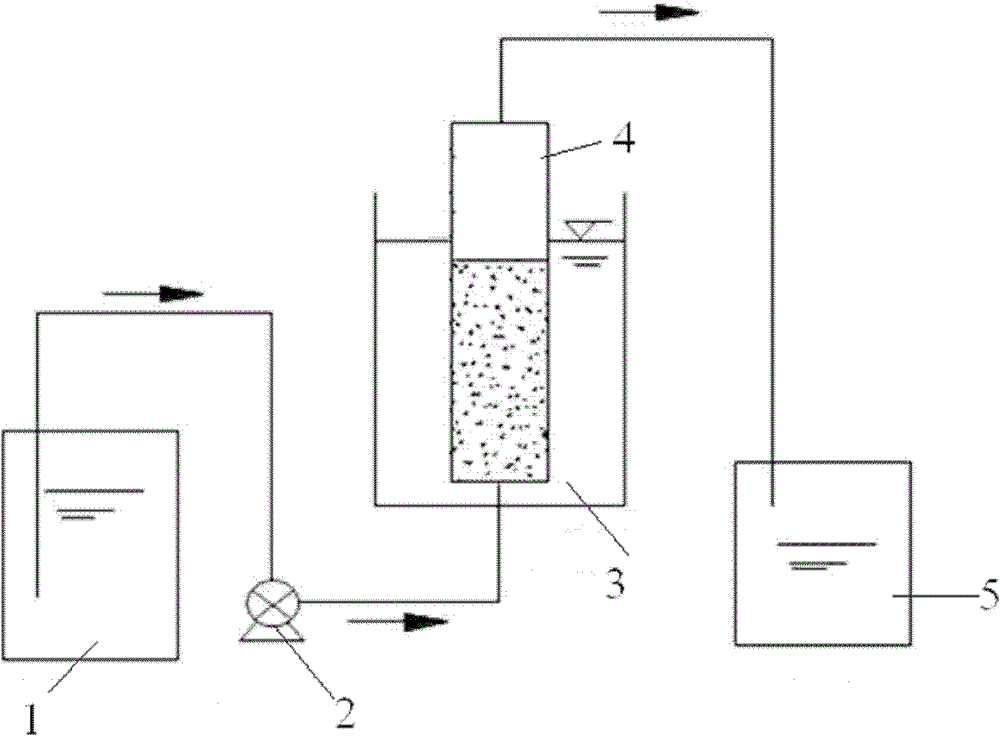Preparation method and application of starch and poly(butylene succinate) thermoplastic blend
A polybutylene succinate and thermoplastic technology, which is applied in the field of environmental protection, can solve the problem that natural starch does not have thermoplastic processing properties, and achieves overcoming the difficulty in controlling the dosage of carbon sources, reducing the cost of denitrification, and strengthening the adaptability. effect of ability
- Summary
- Abstract
- Description
- Claims
- Application Information
AI Technical Summary
Problems solved by technology
Method used
Image
Examples
Embodiment 1
[0019] The preparation method of thermoplastic blend of starch and polybutylene succinate, after stirring 50g cornstarch, 30gPBS (molecular weight 90000), 15g water and 5g wood powder, in a twin-screw extruder at 140~180 ℃ extrusion granulation.
Embodiment 2
[0021] The preparation method of starch and polybutylene succinate thermoplastic blend, after 52g cornstarch, 30gPBS (molecular weight 90000), 13g water and 5g wood flour are stirred evenly, extrude at 160 ℃ in twin-screw extruder out of granulation.
Embodiment 3
[0023] The preparation method of starch and polybutylene succinate thermoplastic blend, after 55g tapioca starch, 33gPBS (molecular weight 100000), 10g water and 2g KH-560 silane coupling agent are stirred, in twin-screw extruder Extrude and granulate at 140-180°C.
PUM
 Login to View More
Login to View More Abstract
Description
Claims
Application Information
 Login to View More
Login to View More - R&D
- Intellectual Property
- Life Sciences
- Materials
- Tech Scout
- Unparalleled Data Quality
- Higher Quality Content
- 60% Fewer Hallucinations
Browse by: Latest US Patents, China's latest patents, Technical Efficacy Thesaurus, Application Domain, Technology Topic, Popular Technical Reports.
© 2025 PatSnap. All rights reserved.Legal|Privacy policy|Modern Slavery Act Transparency Statement|Sitemap|About US| Contact US: help@patsnap.com



